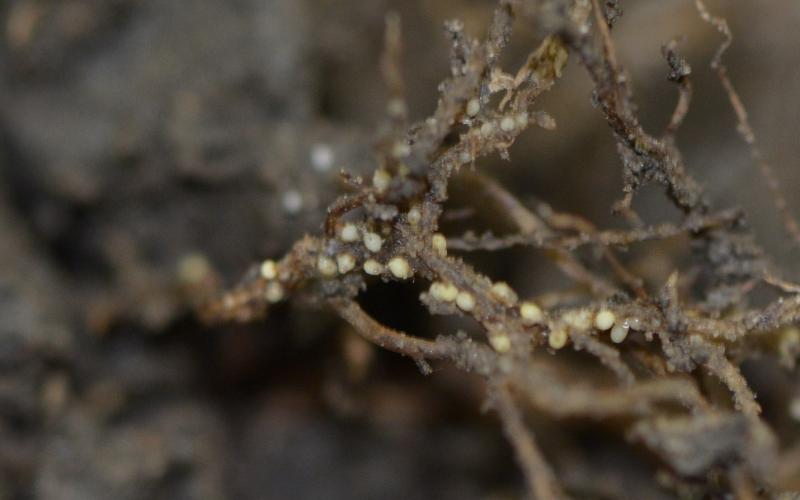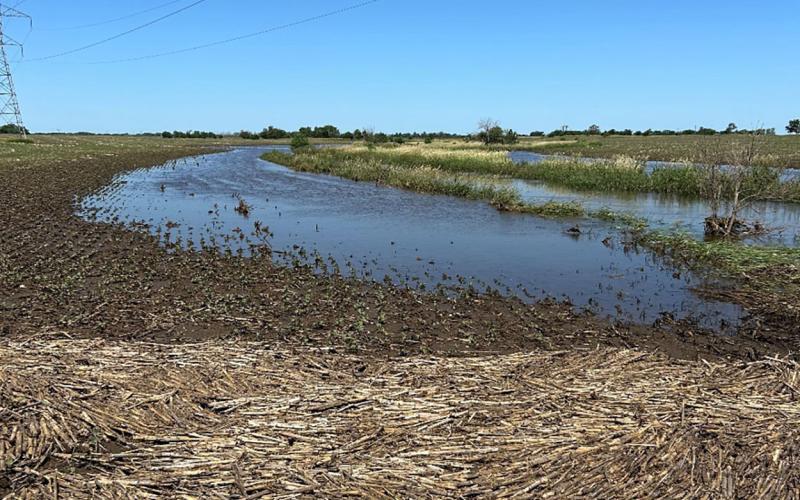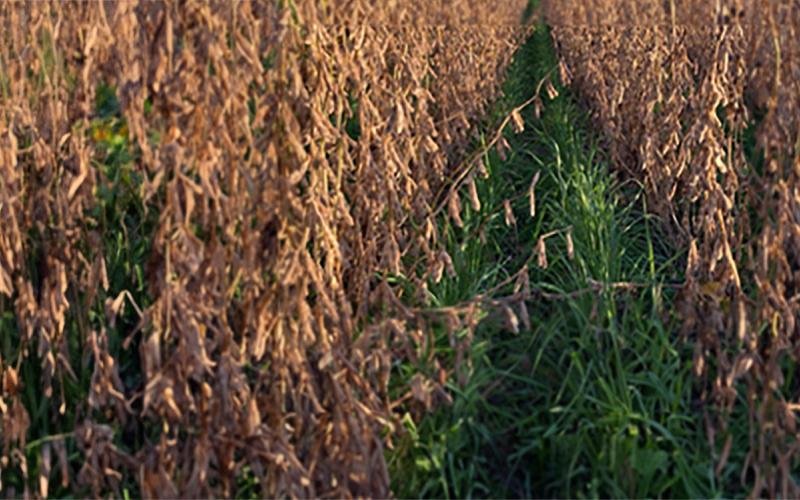This article was authored by Ron Gelderman, former Professor & SDSU Extension Soils Specialist.
There has been much press and interest for foliar fertilization of soybean - especially for micronutrients based on plant analysis. In general, foliar fertilization has not proven effective unless there is severe deficiency of a particular nutrient.
Soybean requires large amounts of the macronutrients N, P, and K and smaller amounts of secondary and micronutrients to produce maximum yields. About 4.9 lbs of nitrogen (N), 1.1 lbs of P2O5, 2.4 lbs of K2O and 0.4 lbs of sulfur are contained in a bushel of soybean. On the other hand, micronutrients such as zinc, iron, manganese, copper and boron are taken up as a fraction of a pound on an acre basis. The amount that is actually needed is less than what is taken up in most cases but those levels are not well defined because micronutrient deficiencies in soybean are rare, especially in South Dakota with our relatively high fertility soils. Because of the large need, foliar application is usually not considered for macronutrients and are better applied as a soil application. In high soybean yield situations, there is some evidence that added in-season (about early pod) N (20-30 lbs/a) may be beneficial but the uptake of the applied N is mostly from the soil rather than foliar.
A review of foliar fertilization studies conducted by Iowa State revealed that only about 15% of the fields had a yield increase and the average yield response over all fields was less than 1 bu/a. There was not a good method to predict which fields would respond to the foliar application. Low soil testing fields gave a higher probability of response than high testing soils, but tissue analysis for P and K concentrations was not a reliable diagnostic tool.

In South Dakota, there has been foliar fertilization studies on 14 soybean sites, three corn and two small grain sites over the past 35 years. These studies had multiple treatments covering almost all the macro, secondary and micro nutrients. There was only one positive response and that was added foliar phosphorus (P) to very P deficient corn. There were four treatments that caused yield declines, either from leaf burn or other unknown causes.
There also has been much interest in adding manganese with glyphosate applications to soybean. Most of these positive responses took place in Indiana on high organic matter, high pH soils – soils on which we would anticipate a micronutrient deficiency but just not a problem in South Dakota.
The bottom line? Foliar nutrient applications seldom pay on soybean and are more likely to cause yield declines. In addition, plant analysis is not a good predictor of fertilizer response to added nutrients. Soil testing is a much better indicator of nutrient need. Unless a rescue operation is needed, most nutrient applications should be done prior to or at planting.


